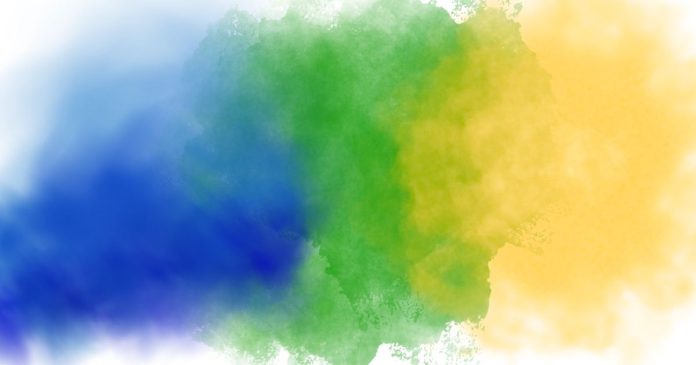Colors are everywhere in our world, from the vivid hues of nature to the subtle shades in a painting. But what happens when you mix two colors together? If you’ve ever wondered what color you get when you mix blue and yellow, the answer is both simple and fascinating: green. This blog will dive into the science and art behind color mixing, explaining why blue and yellow create green, how shades can vary, and how this knowledge applies to real-world creativity.
The Science Behind Color Mixing
To understand why blue and yellow make green, we need to explore the basics of color theory.
1. Primary Colors
In traditional color theory, which is based on the subtractive color model, the primary colors are red, blue, and yellow. These colors cannot be created by mixing others and are the foundation for all other hues.
2. Secondary Colors
When you mix two primary colors, you create a secondary color. Specifically:
- Red + Blue = Purple
- Red + Yellow = Orange
- Blue + Yellow = Green
3. The Subtractive Color Model
The subtractive model applies to pigments, like paints or inks. Pigments work by absorbing certain wavelengths of light and reflecting others. When you mix blue and yellow pigments, the result is green because both pigments absorb (subtract) certain wavelengths, leaving green as the reflected color.
How Shades of Green Vary
While mixing blue and yellow always produces some form of green, the exact shade can vary based on several factors:
1. Ratios
The proportion of blue to yellow affects the resulting shade:
- More Blue: Produces a darker, cooler green.
- More Yellow: Results in a lighter, warmer green.
2. Type of Blue and Yellow
Not all blues and yellows are the same. For instance:
- A cool blue, like cyan, mixed with a bright yellow creates a vibrant lime green.
- A deep blue, like ultramarine, mixed with a muted yellow, like ochre, results in a more subdued, earthy green.
3. Medium
The medium you use can also influence the outcome:
- Paints: The quality and opacity of pigments play a significant role in the resulting shade.
- Digital Colors: Mixing colors in a digital format (like on a computer) often follows the additive RGB color model, which behaves differently than the subtractive model.
Applications of Mixing Blue and Yellow
Understanding how blue and yellow create green isn’t just a fun fact—it’s incredibly useful in various fields:
1. Art and Design
Artists frequently mix blue and yellow to create custom shades of green for landscapes, foliage, and other natural elements. Designers use these principles when choosing complementary color palettes for digital or print projects.
2. Home Decor
Mixing paint colors is common in interior design. Knowing how blue and yellow interact can help create harmonious, natural tones for walls, furniture, or accents.
3. Education
Teaching color mixing is a staple in art classes for children and adults alike. Mixing blue and yellow to create green is one of the first steps in exploring creativity through color.
4. Branding and Marketing
Green is often associated with nature, health, and growth. Businesses use shades of green, created from blue and yellow, to evoke these qualities in their branding.
Fun Facts About Green
- Symbolism: Green often represents renewal, life, and balance. It’s also associated with luck (think four-leaf clovers) and money.
- Nature’s Color: Green dominates the natural world, from grass to leaves. This abundance is why mixing blue and yellow to create green feels intuitive and familiar.
- Cultural Variations: Different cultures interpret green differently. For example, in Western cultures, it symbolizes growth and fertility, while in some Eastern traditions, it’s linked to new beginnings and peace.
Tips for Perfect Color Mixing
If you’re ready to start mixing colors, here are some tips to get the best results:
- Use a Palette
Keep a mixing palette handy to test combinations before applying them to your project. - Experiment with Ratios
Start with small amounts of each color and adjust ratios gradually to achieve the desired shade. - Test on Paper
For paints, test your mixed color on a scrap piece of paper to see how it looks when it dries—it might differ from the wet version. - Use Quality Materials
Higher-quality paints, markers, or digital tools will produce more vibrant and consistent results. - Take Notes
If you’re creating a custom shade for a specific project, jot down the proportions of blue and yellow you used so you can replicate it later.
Beyond Blue and Yellow
While mixing blue and yellow to make green is a staple of color theory, exploring other combinations can lead to even more creative discoveries:
- Add a bit of red to your green mix to create earthy tones like olive or brownish-green.
- Introduce white to lighten your green, or black to darken it for shadow effects.
- Experiment with complementary colors to find the perfect balance for your designs.
Conclusion
Mixing blue and yellow to create green is a foundational concept in color theory, bridging the gap between science and creativity. Whether you’re painting a masterpiece, designing a logo, or simply learning the basics of color, understanding how these colors interact is a valuable skill.
So the next time you pick up a paintbrush or open a design app, remember: blue and yellow hold the power to create a world of green possibilities!



